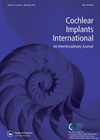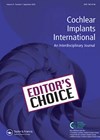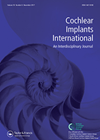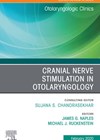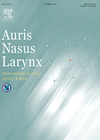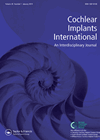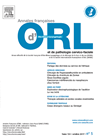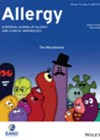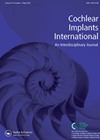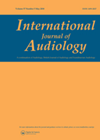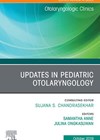
Journal Reviews
Hidden disabilities and cochlear implantation under 12 months of age
There has been a global shift to providing children with severe-profound deafness cochlear implants (CIs) before they are 12 months old. Early intervention is critical and one of the overriding factors in successful outcomes for children with CIs. Early implantation...
Quality of life in adolescence
Adolescence can be a difficult time and the added complexity of a hearing loss can exacerbate feelings during this period. In the literature, there are mixed findings that show while some children with hearing loss score poorly on some aspects...
Dead regions in patients with cochlear implants
The very nature of a dead region (DR) in a cochlea means that they are often found in patients who are eligible for cochlear implants. However, a variety of different hearing configurations are found in those with DRs because of...
Cochlear implant use in young children
There are clear and well-established links between those identified and fitted with amplification early and good spoken language outcomes, but how much does the time an appropriately fitted hearing instrument is used each day contribute to this? During the first...
Advances in neural stimulation of the auditory pathway
This article reviews the use of neuroprosthetic devices such as cochlear and auditory brainstem implants (ABI) to stimulate the auditory pathway, discussing the successes, limitations and advances in this area. Currently, neuroprosthetic devices deliver electrical impulses to the cochlear nerve...
Treatment of incus lysis with hydroxyapatite bone cement
Middle ear implants provide a suitable alternative for some patients with a certain degree of sensorineural or mixed hearing loss, not wanting a hearing aid. Vibrant SounBridge® (VSB) middle ear implant (MEI), of Med-El®firm, is one such implant. In this...
X-ray vs. intraoperative testing for determining cochlear implant placement
Most cochlear implant centres confirm electrode position after surgery using X-rays to ensure optimal electrode placement. As well as transorbital view X-rays, this team check placement using impedance measures and neural response telemetry (NRT) performed intraoperatively. The former indicates whether...
Your voice and your personality
Variations of vocal effort are a normal adaptation to difficult communication situations. However, persistence of these abnormal strategies can lead to various functional dysphonias. In this experiment, the authors tested 41 females aged 18-52. The subjects were asked to instruct...
Chronic rhinitis endotypes
Chronic rhinitis (CR) is common with up to 30% of the population affected, with a significant impact on quality of life. CR includes several phenotypes with different pathogenesis including allergy, autoimmune, age, occupation, pregnancy, neurogenic and drugs. Such variation means...
Which cross-over frequency is best for electro-acoustic stimulation?
Advances in technology and improved soft surgical techniques have led to individuals with better hearing thresholds, especially at the low frequencies, becoming candidates for cochlear implants (CI). Surgeons are more confident that residual hearing can be preserved thus making those...
Cochlear implants and speech perception
Cochlear implants can be an effective treatment for specific hearing losses. They may often be the only way to restore hearing for profoundly deaf people. Therefore, it is very important to understand all processes that may influence effective fitting of...
Understanding osseointegration for the otologist
Bone conduction implants are hearing devices that require osseointegration to create a stable and reliable interface between the hearing device and the skull to deliver sound to the cochlea. This article reviews the physiology of osseointegration, factors that may lead...

